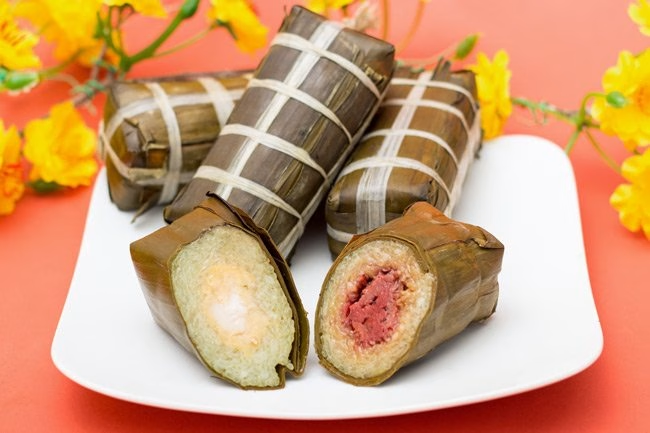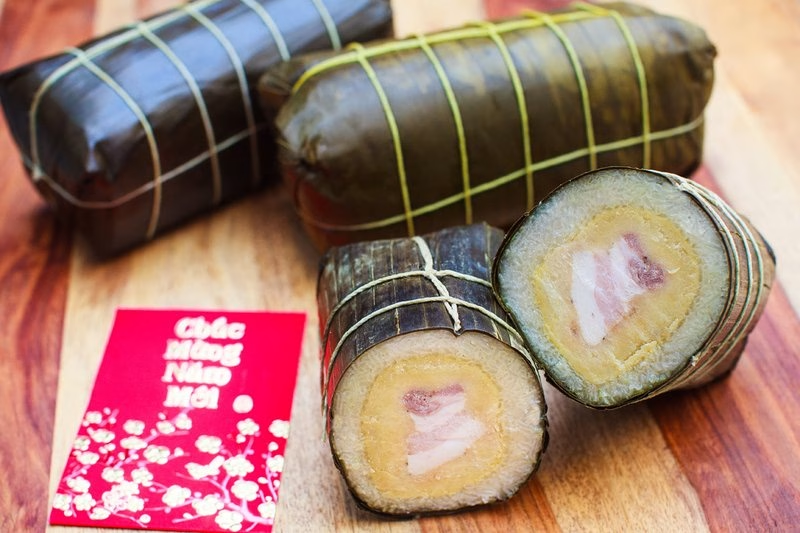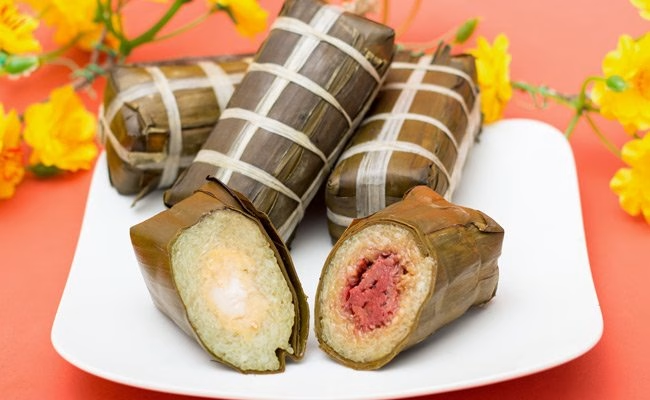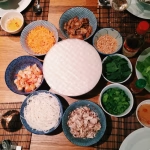
Introduction
Banh Tet, or Tet Cake, is more than just a delightful treat; it’s a beloved Vietnamese tradition that often graces the tables during the Lunar New Year. This beautifully wrapped cake, made primarily of glutinous rice, mung beans, and pork, encapsulates the essence of Vietnamese culture. Its distinct flavors and textures make it a festive favorite, symbolizing prosperity, family togetherness, and the celebration of new beginnings.
In this article, you’ll learn everything you need to know about making Banh Tet (Tet Cake) at home, including the authentic ingredients, step-by-step instructions, and tips to perfect your culinary adventure. Whether you’re a seasoned chef or just starting in the kitchen, I’m here to guide you through creating this delicious treat that brings joy to every gathering.
Ingredients
To start your Banh Tet (Tet Cake) journey, you’ll need to gather the following ingredients. Here’s a handy table to help you organize your shopping list:
| Ingredient | Measurement | Description |
|---|---|---|
| Glutinous Rice | 2 cups | This sticky rice is the base of Banh Tet and provides a chewy texture that holds the filling perfectly. |
| Mung Beans | 1 cup | Soft and creamy when cooked, mung beans add a subtle sweetness to the filling of Banh Tet. |
| Pork Belly | 1 cup | The savory flavor of pork belly complements the sweetness of mung beans, creating a balanced taste profile. |
| Screwpine Leaves (Pandan) | 4-6 leaves | These fragrant leaves not only enhance aroma but also add a lovely green color to the cake. |
| Salt | 1 tsp | A touch of salt brings out the flavors of both the sweet and savory components. |
| Black Pepper | 1/2 tsp | Ground black pepper adds a hint of spice that elevates the overall flavor of Banh Tet. |
| Water | Enough to soak and boil | Essential for cooking the rice and mung beans to the perfect consistency. |
Step-by-Step Instructions
Making Banh Tet (Tet Cake) requires a bit of patience, but the process is rewarding! Follow these steps closely for the best results.
Step 1: Soak the Ingredients
Begin by soaking the glutinous rice and mung beans separately in water for at least 6 hours, or preferably overnight. This softens the ingredients, ensuring they cook thoroughly and absorb flavors beautifully. While you’re at it, soak the screwpine leaves in warm water to make them more pliable for wrapping later on.
Step 2: Prepare the Filling
Next, drain the mung beans and steam them until cooked. Mash them gently with a fork. In a separate bowl, marinate the pork belly with a sprinkle of salt and black pepper. This infusion of flavors is key as it enhances the meat’s natural taste.
Step 3: Assemble the Cake
To assemble, lay out a piece of banana leaf (or screwpine leaves) and place a layer of glutinous rice in the center. Add a layer of mashed mung beans, followed by pieces of marinated pork. Top with another layer of mung beans and then cover it with more rice. Wrap the leaves tightly, ensuring the filling is sealed inside.
Step 4: Cook the Cake
In a large pot, place a steaming rack and fill it with water. Place the wrapped cakes on the rack and cover with a lid. Steam the Banh Tet for about 4-6 hours, replenishing water as necessary. When done, the cake should be firm to the touch.
Step 5: Serve & Enjoy
Once cooked, allow the cakes to cool slightly before unwrapping. Slice them into sections to reveal the beautiful layers. Serve warm, and consider pairing them with *nuoc cham*, a Vietnamese dipping sauce that balances the rich flavors perfectly.
Pro Tips
– **Choose Quality Ingredients**: The quality of the glutinous rice and pork belly will significantly affect the final outcome of your Banh Tet. Opt for fresh, high-quality ingredients when possible.
– **Get Creative with Fillings**: While traditional Banh Tet includes mung beans and pork, feel free to experiment with fillings like chestnuts, dried shrimp, or even vegetables for a vegan twist.
– **Practice Wrapping**: Wrapping can be tricky. Don’t hesitate to practice a few times. The key is to wrap tightly to prevent the filling from escaping.
– **Cooking Time**: Cooking times may vary based on the size of your cakes and the steam pressure. Always check to ensure they’re cooked through!
– **Storing Leftovers**: If you have leftovers, store them in an airtight container in the refrigerator for up to a week. You can reheat them by steaming.
Nutritional Information
Here’s the approximate nutritional breakdown per slice of Banh Tet (Tet Cake):
| Nutrient | Amount |
|---|---|
| Calories | 250 |
| Protein | 8g |
| Carbohydrates | 45g |
| Saturated Fat | 3g |
| Fiber | 2g |
| Cholesterol | 30mg |
| Sugars | 1g |
| Total Fat | 6g |
FAQs
What is the best way to store Banh Tet (Tet Cake)?
To store Banh Tet, wrap it in plastic wrap and place it in the refrigerator. It can be kept for about a week.
Can Banh Tet (Tet Cake) be made vegan or gluten-free?
Absolutely! You can substitute pork with your favorite mushrooms or jackfruit. Use gluten-free rice to make it gluten-free as well.
What are the best side dishes to serve with Banh Tet (Tet Cake)?
Pair it with pickled vegetables or a savory dipping sauce like *nuoc cham* for a delightful contrast.
How long does it take to prepare Banh Tet (Tet Cake)?
Preparation can take a few hours, including soaking. Cooking time is about 4-6 hours, so be prepared for a culinary adventure!
Can I freeze Banh Tet (Tet Cake) for later?
Yes! Banh Tet freezes beautifully. Just wrap it tightly and store it in the freezer. Re-steam before serving.
Why is Banh Tet (Tet Cake) traditionally served during Tet?
Banh Tet is a symbol of prosperity and family unity. It represents the earth and sky in Vietnamese culture, making it essential for the Lunar New Year festivities.
What can I do if my Banh Tet doesn’t hold its shape?
Ensure your wrapping is tight and the rice is fully cooked before wrapping. If it still falls apart, it might need a longer steaming time.
Is there a special way to slice Banh Tet (Tet Cake)?
For the best presentation, use a sharp, wet knife to slice through the cake, ensuring clean edges to reveal the beautiful layers inside.
Creating Banh Tet (Tet Cake) is not just a cooking project; it’s an opportunity to connect with Vietnamese traditions and bring a slice of culture into your home. Whether you’re celebrating Tet or simply enjoying a unique dish, the flavors and stories behind Banh Tet are sure to delight your taste buds.
So, why not give it a try? Make your own Banh Tet (Tet Cake) and let us know how it turns out in the comments! Your kitchen adventure awaits!






